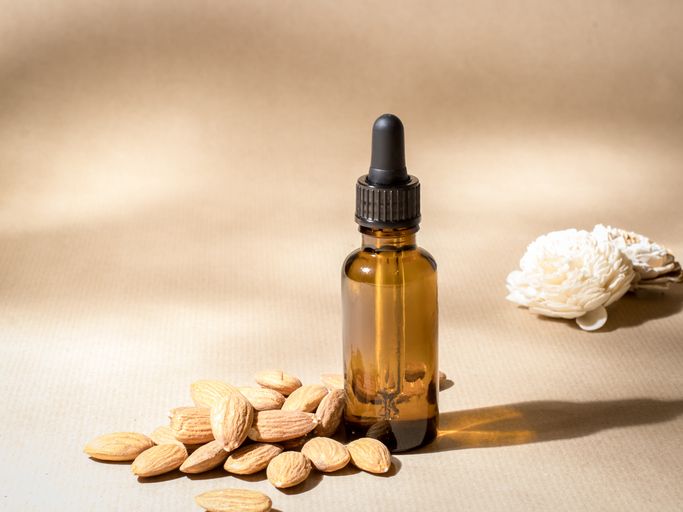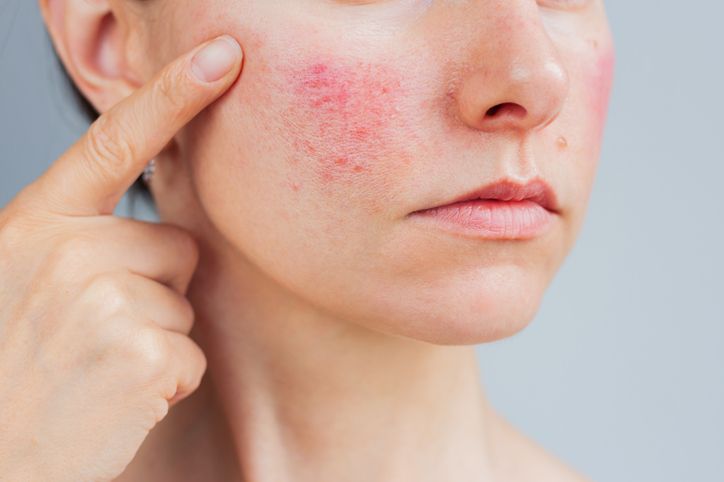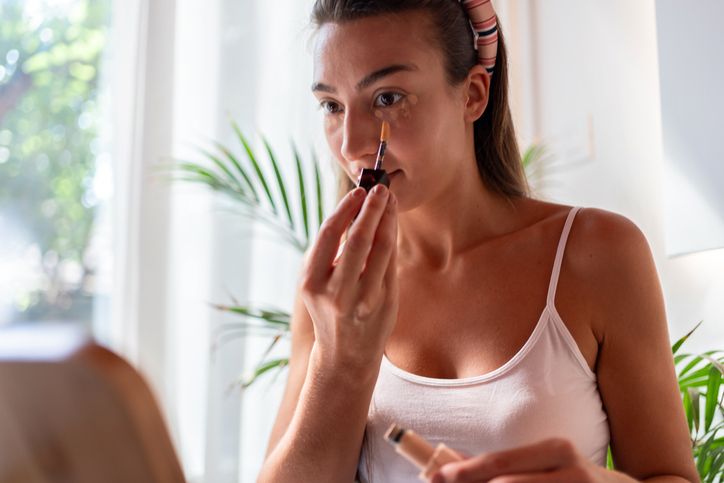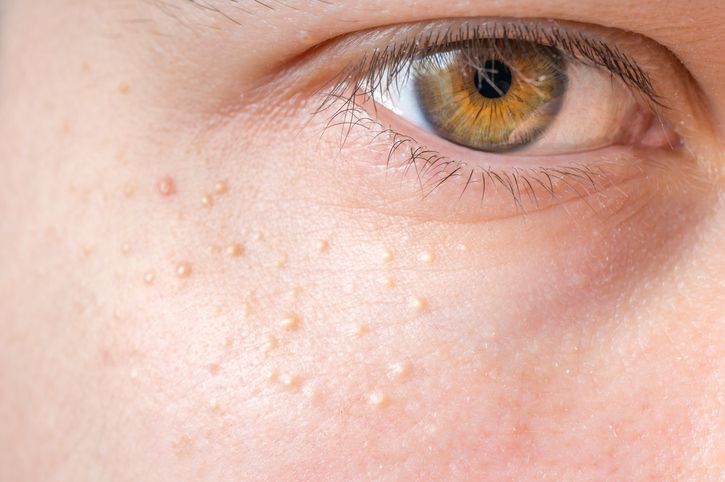- Home
- Trend
- Weight Loss Strategies
- Acne Tips
- Hair Health Information
- Blemish Removal Tips
- Acne Scar Removal Tips
- Muscle Building Techniques
- Intimate Care Tips
- Postpartum Intimate Care
- Eye Bags Wiki
- Tips for Face Slimming
- Secret of Permanent Hair Removal
- Breast Enlargement Tips
- Cure to Snoring
- Marionette Lines
- Skin-Tightening Secrets
Scalp inflammation is often linked to follicle health. Symptoms like itchiness, redness, and flaking can be extremely annoying—and in severe cases, may even lead to hair loss. Want to know how to care for your scalp? Let’s hear what dermatologists recommend!
What Are the Symptoms of Scalp Inflammation?

When it comes to scalp inflammation, many people only associate it with itchiness and dandruff. In reality, inflammation can involve much deeper symptoms. The following seven signs of scalp inflammation are quite common—see if any sound familiar!
1. Increase in Dandruff
One common cause of scalp inflammation is the overgrowth of fungi, which can trigger flaky, scaly dandruff. If you notice a sudden increase in dandruff—white flakes, yellowish clumps, or pieces that scatter easily with a light touch—it could signal an underlying scalp issue.
2. Redness and Swelling of the Scalp
Just like facial skin, the scalp can become red and swollen when irritated. Chemical exposure, for example, may cause the scalp to appear reddish and feel puffy to the touch. This symptom often occurs alongside itchiness, dryness, or flaking.
3. Itchy Scalp
An itchy scalp is a major discomfort. Whether from excess oil or dryness, itchiness can drive people to scratch their scalp, often with fingernails—risking damage, bacterial infection, and worsening inflammation.
4. Increased Oil Production
Excess oil can be a sign of inflamed scalp. When scalp health deteriorates, the sebaceous glands may go into overdrive, causing oil buildup that clogs hair follicles, restricts oxygen supply, impairs hair growth, and can lead to hair loss.
5. Dryness of the Scalp
A healthy scalp requires a balance of moisture and oil. Irritation can disrupt this balance—sometimes causing excess oil, other times leading to dehydration and severe dryness. This promotes the formation of dry-type dandruff.
6. Foul Odor
Increased oil secretion creates an environment for bacterial growth. Oil trapped near the roots and follicles can cause a greasy, unpleasant odor. This affects not just hygiene, but also social interactions.
7. Severe Hair Loss
The most serious consequence of scalp inflammation is hair loss. If left untreated, inflammation can damage hair follicles to the point they stop growing hair entirely. Inflammation starts at the root, weakening the scalp’s grip on the hair, which accelerates hair fall.
What Causes Scalp Inflammation and Its Link to Hair Follicles?

Scalp inflammation doesn’t happen without a cause, and often it stems from multiple overlapping factors. If your scalp feels uncomfortable, it’s crucial to consult a hair specialist to identify and address the triggers early on.
1. Humid or Dry Weather
Hong Kong summers are extremely humid, and heat causes excessive sweating. A film of sweat and oil often builds up on the scalp, blocking pores, disrupting oil balance, and worsening inflammation. On the other hand, very dry weather can dehydrate the scalp, triggering excess oil production and more dandruff or greasiness.
2. Skin Conditions
The scalp, like facial skin, is prone to various skin conditions—some of which include the scalp in their affected area. Common issues like psoriasis, ringworm, folliculitis, or scalp eczema can cause symptoms such as dandruff, redness, and itchiness. The more severe the condition, the higher the risk of hair loss.
3. Washing Hair Too Often or Too Little
While regular washing helps remove excess oil and flakes, doing it too often or too rarely can throw off the scalp’s oil balance. Washing too frequently strips away protective oils, causing the scalp to overcompensate. Infrequent washing allows oil and dirt buildup, clogging follicles and triggering inflammation. Oily scalps may benefit from daily washing, while dry scalps can go 1–2 days between washes to minimize irritation.
4. Frequent Perming or Dyeing
Changing hairstyles frequently—especially bleaching or dyeing—puts extra stress on the scalp. These processes involve strong chemicals that can irritate or even burn the scalp. Bleaching, in particular, is highly stimulating, and repeated chemical exposure may lead to contact dermatitis and inflammation.
免費體驗
F8 Hair Regrowth Treatment
1 Minute Self-Registration
Date should not be before minimal date
Different Types of Scalp Inflammation
If your scalp is red, itchy, and flaky—yes, it could be inflammation. But there are different types. Even if you see a hair specialist, they’ll need to identify the type before treatment. Here’s how to distinguish them:
1. Seborrheic Dermatitis
Also known as seborrhea, this form of scalp eczema is mainly caused by an overgrowth of Malassezia yeast. It appears in oily, sweat-prone areas—making the scalp a prime target.
It leads to excess oil, greasy hair, persistent dandruff, odor, and itching. In severe cases, it causes hair loss at the crown, gradually spreading outward, resulting in thinning or bald patches.
2. Folliculitis
Often overlooked, folliculitis begins with small red bumps or pimple-like eruptions on the scalp. Early symptoms are mild but may worsen if ignored, potentially damaging follicles and leaving scars where no new hair can grow—resulting in scarring alopecia.
3. Scalp Eczema
Both overly moist and overly dry environments can trigger eczema. Dry-type eczema often flares in winter or after using harsh shampoos, leading to red, itchy, flaky patches. Scalp eczema often includes purplish-red skin, dry flakes, and persistent itch.
4. Psoriasis
Commonly known as "scalp psoriasis," this immune-related condition mimics eczema but includes silvery-white scale buildup, redness, and itchiness. In severe cases, it may spread beyond the scalp, affecting appearance and confidence.
5. Contact Dermatitis
This form of inflammation results from allergic reactions to external irritants like perm lotions, dyes, shampoos, or conditioners. The scalp may become red, itchy, flaky, or even sting in response to these products.
What Your Scalp Color Says About Your Scalp Health
Scalp inflammation doesn’t just show in symptoms—your scalp color can also reflect your underlying scalp condition. Here's what different scalp colors may indicate:
1. Pink
A pink scalp is often seen in people with sensitive or eczema-prone skin. This suggests a weakened skin barrier, making it more vulnerable to external irritants like dust, pollution, and UV rays. It may also be an early sign of scalp aging or poor oxygenation. To improve this, try scalp massage, a healthy diet, and proper washing to boost blood circulation and oxygen delivery.
2. Red
Redness is a classic sign of scalp inflammation, usually accompanied by itchiness and dandruff. It’s especially common in people with seborrheic dermatitis. Redness may also result from hair treatments or aggressive scratching. Reducing inflammation through anti-fungal shampoos and avoiding scalp damage can help.
3. Orange-Tinted
An orange hue could be an early warning sign of oxygen deficiency in the scalp. This may mean your hair isn’t receiving enough nutrients, which could lead to hair loss. It’s also a possible sign of liver imbalance. In TCM, the liver “stores blood” and “nourishes the hair,” so a weakened liver can impact hair health. Prioritize rest and liver care.
4. Pale Yellow
A pale yellow scalp might signal internal issues such as lymphatic congestion, stress, low immunity, or frequent illness. Unhealthy lifestyle habits—smoking, drinking, lack of sleep—can contribute to this discoloration and harm scalp health. Adjusting your habits can help restore balance.
Dermatologist’s Tips: How to Wash Hair Properly and Prevent Folliculitis
Washing your hair is a daily habit—but if done incorrectly, it can damage your scalp over time. We asked a dermatologist for expert advice on proper hair-washing techniques to help prevent scalp inflammation.
1. Choose the Right Shampoo
Medical shampoos are essential for treating scalp issues. Using the wrong one can worsen inflammation or even cause hair loss. Here are targeted ingredient suggestions:
• For dry scalp eczema: Use shampoos with moisturizing, anti-inflammatory ingredients like tar or selenium sulfide.
• For seborrheic dermatitis: Look for shampoos with salicylic acid, ciclopirox olamine, or piroctone olamine to inhibit fungal growth and reduce itch and oiliness.
• For folliculitis: Zinc pyrithione helps unclog pores, reduce oil buildup, and relieve inflammation-related scalp pimples and redness.
2. Avoid Hot Water
Using overly hot water can irritate the scalp and worsen inflammation. Even if you don’t have scalp issues, hot water can stimulate excess oil production, making your hair greasier.
3. Massage Your Scalp During Shampooing
Scalp massage improves blood circulation, boosts oxygen supply to the hair follicles, and enhances the shampoo’s effectiveness. Use your fingertips (not nails) to gently massage in circular motions—this avoids damaging the scalp further.
4. Stop Using Conditioners and Styling Products
Many women use conditioners or styling products like sprays and waxes, but these often contain irritating ingredients (fragrance, silicone, menthol) that clog follicles and trigger itching, redness, or more dandruff. Pausing these products can give your scalp a chance to recover.
5. Clean Your Pillowcases and Hats Regularly
Items that come into contact with your scalp—pillows, hats, combs, towels—can collect oil, bacteria, and dirt. Without regular cleaning, these can contribute to scalp inflammation. Wash or replace them weekly to reduce infection risks and maintain scalp health.
免費體驗
F8 Hair Regrowth Treatment
1 Minute Self-Registration
Date should not be before minimal date
Say Goodbye to Scalp Inflammation! Hair Experts Recommend: Scalp Care for Healthy Growth
Scalp inflammation—whether it’s itchiness, redness, folliculitis, or scalp acne—can affect hygiene, appearance, and even lead to hair loss. Don’t wait until it’s too late.
Early treatment helps preserve follicle health and prevent future hair loss. Whether you’re in the early stages or already experiencing thinning, hair experts recommend this solution:
Perfect Medical F8 Hair Regrowth Treatment uses low-level laser therapy (LLLT), the F8 treatment stimulates hair follicles and encourages regrowth. It also boosts blood circulation and nutrient delivery, promoting healthier hair and scalp.
The treatment:
• Regulates scalp oil production
• Reduces follicle blockage
• Nourishes scalp with premium growth serums
• Rebalances the scalp microbiome
• Soothes inflammation, itch, redness, and dandruff
Register online now to receive a F8 Hair Regrowth trial from Perfect Medical. The offer includes a professional scalp analysis and a complimentary laser hair comb—available for a limited time only, while supplies last. Don’t miss this chance to nurture a healthy scalp!
Get the Trial Now: Perfect Medical F8 Hair Regrowth Treatment免費體驗
F8 Hair Regrowth Treatment
1 Minute Self-Registration
Date should not be before minimal date
FAQ

What are the common symptoms of scalp inflammation?
Scalp inflammation may be triggered by external irritants, low immunity, or bacterial overgrowth. Common symptoms include excess dandruff, redness, itchiness, increased oil production, dryness, and odor. In severe cases, it may lead to noticeable hair loss and thinning.
Can humid weather cause scalp inflammation?
Yes. Hong Kong’s humid and hot climate causes sweat and oil buildup on the scalp, clogging pores and worsening inflammation. However, very dry weather can also dehydrate the scalp, leading to overcompensation in oil production and more dandruff.
How can scalp color indicate scalp health?
Scalp color can reflect both scalp and internal health: Pink: Sensitive or eczema-prone scalp, or aging and poor oxygenation. Red: A sign of inflammation, often with dandruff and itch. Orange: Signals oxygen deficiency or liver imbalance. Pale Yellow: May indicate internal issues like lymph congestion or low immunity, often worsened by stress or poor habits.
What ingredients should I look for in anti-fungal shampoos?
For dry scalp eczema: Look for tar or selenium sulfide. For seborrheic dermatitis: Choose shampoos with salicylic acid, ciclopirox olamine, or piroctone olamine to reduce fungus and oil. These ingredients help relieve itch, redness, and flaking.
Can scalp inflammation be improved through scalp treatments?
Yes. Early intervention can preserve follicle health and prevent hair loss. Treatments like Perfect Medical’s F8 use laser technology and advanced serums to rebalance the scalp, reduce inflammation, and stimulate hair regrowth.









